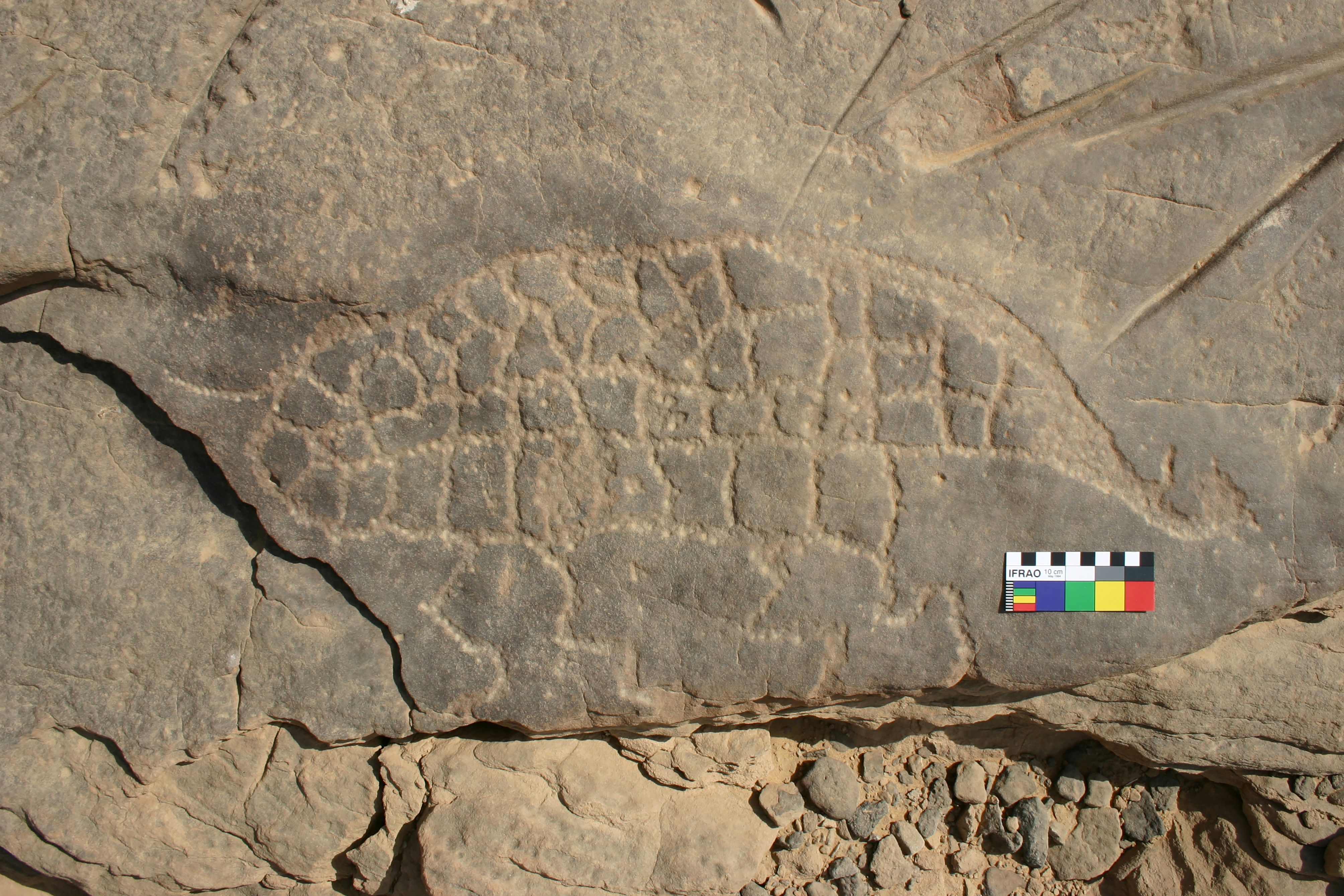The latest results in Egyptology
The latest research in the field of Egyptology is being sent to subscribers around the world. Volume 110 of the Journal of Egyptian Archaeology includes articles discussing, amongst other topics, New Kingdom graffiti, the Eastern Desert in the Roman Period, discoveries at Deir el-Bahari, Coptic inscriptions, a painting of Petrie's fieldwork, and even a report on the salvage excavation in Rio de Janeiro's National Museum.

A chameleon petroglyph at el-Hosh in Upper Egypt (photo: L Evans, F Hardtke, and W Claes) - photo featured in Linda Evans, Fred Hartke, and Wouter Claes' article 'The Goat Fish of El-Hosh: An Unusual Petroglyph Identified'.
Additionally, the volume contains two articles published through the Mentoring for Egyptian and Sudanese Authors (MESA) scheme, The Statue of Minnakht, the God's Father of Mut in the Egyptian Museum, Cairo (CG 624 - JE 27585) by Dina El Gabry and Two Coptic Inscriptions on Mural Paintings at the Coptic Museum by Muhammady Fathy. The MESA scheme was initiated in 2020 by JEA Editor-in-Chief Dr Claudia Näser and has been generously funded by our Patron Giving Circle. MESA receives enthusiastic feedback from authors, mentors, reviewers, and readers, alike. Since its inception, all concluded mentorships led to the anticipated publication – thus, the success rate of the programme is 100%. Being able to bring members of the global Egyptological community together and help tear down persisting inequalities fills us with pride.
A new style guide for the Journal of Egyptian Archaeology was first launched in 2022 to make the journal more inclusive and accessible for both authors and readers. The new style, which was used for the first time in the second part of volume 109, is used throughout volume 110 and allows for clearer referencing in footnotes and adds a bibliography to the articles. Authors will find that this will increase visibility and citations of their work, while readers can identify bibliographic references more easily and will benefit from an improved flow of text. Since it's implementation, we have found that both authors and reviewers have appreciated the new style.
With the initiatives outlined above we hope to help empower global scholars working in Egyptology and related fields.
Not received your copy yet? Don’t worry, these should be with you shortly but don’t forget that if you have subscribed to the JEA with your EES membership, then you will have access to the full volume (as well as any back issues) online too: https://journals.sagepub.com/home/ega. Please do contact us if you think you should have recieved your print copy.
Not yet a member? Join the EES here and make sure to select the JEA combo or online add-on to read this latest research in Egyptology.
